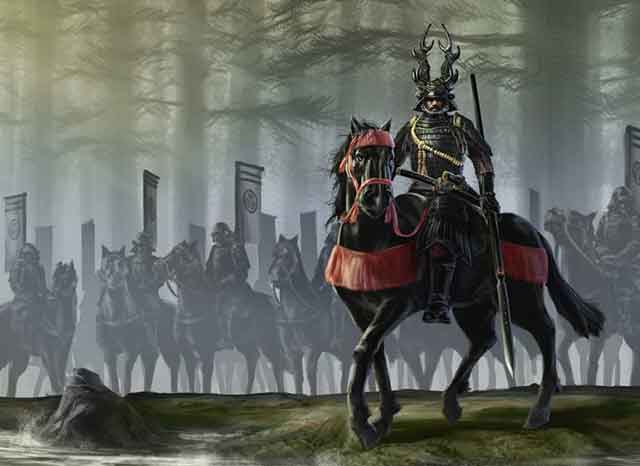
Taking place on October 21, 1600, in what is now Gifu prefecture, Japan, the Battle of Sekigahara marked a turning point at the culmination of the Sengoku period. Tokugawa Ieyasu's forces clashed with a coalition led by Ishida Mitsunari, loyal to Toyotomi, with many clans defecting before or during the battle, ultimately leading to Tokugawa's triumph. This battle, the largest in Japanese feudal history, holds paramount significance and paved the way for the Tokugawa shogunate's establishment.
It took three more years for Tokugawa Ieyasu to consolidate his power over the Toyotomi clan and various daimyō. Nonetheless, the Battle of Sekigahara is widely regarded as the informal genesis of the Tokugawa shogunate, a regime that governed Japan for over two and a half centuries until 1868.
Historical Context
Toyotomi Hideyoshi, an esteemed general under Oda Nobunaga, emerged as a central figure. Following Nobunaga's unification of much of Japan, Hideyoshi avenged his master's death and solidified control, aided by his brother Hidenaga. Rising from humble origins, Hideyoshi's marriage to noble women fortified his claim to leadership.
Despite his accomplishments, Hideyoshi's later years were tumultuous. While Hojo clan rivals were defeated at the Siege of Odawara in 1590, failures in Korean invasions weakened the Toyotomi clan's power and its bureaucratic support. Hideyoshi's execution of Toyotomi Hidetsugu further strained his standing. Amid these challenges, Hideyoshi established a regency government as his young heir, Toyotomi Hideyori, assumed power.
Following Hideyoshi's demise, a power vacuum emerged. Tokugawa Ieyasu and Ishida Mitsunari emerged as prominent factions. Ieyasu's influence, seniority, and alliances with eastern lords contrasted Mitsunari's western supporters. Tensions escalated into open hostilities, culminating in the Battle of Sekigahara.
Battle Details
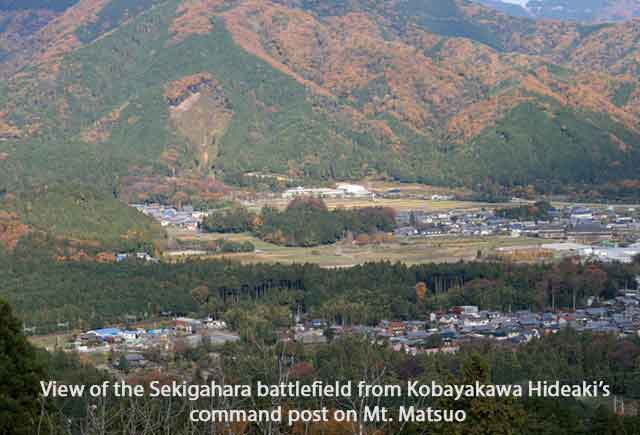
Amid dense fog on the morning of October 21, 1600, the two armies encountered each other. Ishida Mitsunari's defensive formation faced Tokugawa Ieyasu's deployment southward. The fog lifted, and the conflict commenced around 8:00 am.
Fukushima Masanori led the Tokugawa advance against the Western Army's right center, while Ōtani Yoshitsugu countered, exploiting a flank vulnerability. Kobayakawa Hideaki's allegiance wavered before joining the Eastern Army. His defection, along with others, tilted the battle in favor of Tokugawa.
As the Western Army's right flank collapsed, its center retreated. Ultimately, Ishida Mitsunari's forces crumbled, leading to his capture and execution. Western Army commanders fled or were killed, solidifying Tokugawa's victory.
Aftermath and Legacy
The Battle of Sekigahara dramatically weakened Toyotomi influence, enabling Tokugawa Ieyasu's territorial reorganization. The battle's significance grew as Ieyasu assumed the shōgun position in 1603, ending the power vacuum.
Certain clans, including Mōri, Shimazu, and Chōsokabe, harbored bitterness over their treatment after the battle. Their resentment would echo through generations, contributing to the eventual downfall of the Tokugawa shogunate during the Meiji Restoration.
In summary, the Battle of Sekigahara was a pivotal event that reshaped Japan's course, solidifying Tokugawa's ascendancy and heralding an era of historical change.
See also
-
The Siege of Hara Castle

The Shimabara Rebellion of 1637–1638, which culminated in the siege of Hara Castle, was the last major uprising of the Edo period and had serious political consequences.
-
Battle of Tennoji

The confrontation between Tokugawa Ieyasu and Toyotomi Hideyori during the “Osaka Winter Campaign” ended with the signing of a peace treaty. On January 22, 1615, the day after the treaty was signed, Ieyasu pretended to disband his army. In reality, this meant that the Shimazu forces withdrew to the nearest port. On the same day, almost the entire Tokugawa army began filling in the outer moat.
-
Siege of Shuri Castle

The Ryukyu Kingdom was established in 1429 on Okinawa, the largest island of the Ryukyu (Nansei) archipelago, as a result of the military unification of three rival kingdoms. In the following years, the state's control spread to all the islands of the archipelago.
-
The Siege of Fushimi Castle
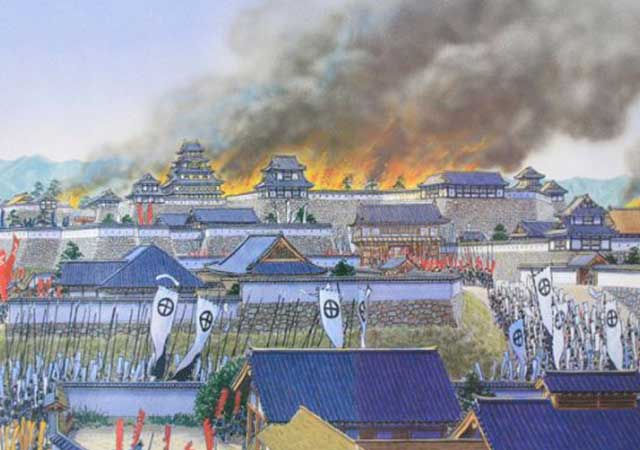
Fushimi can perhaps be considered one of the most “unfortunate” castles of the Sengoku Jidai period. The original castle was built by Toyotomi Hideyoshi in the southeast of Kyoto in 1594 as his residence in the imperial city.
-
The Siege of Otsu Castle
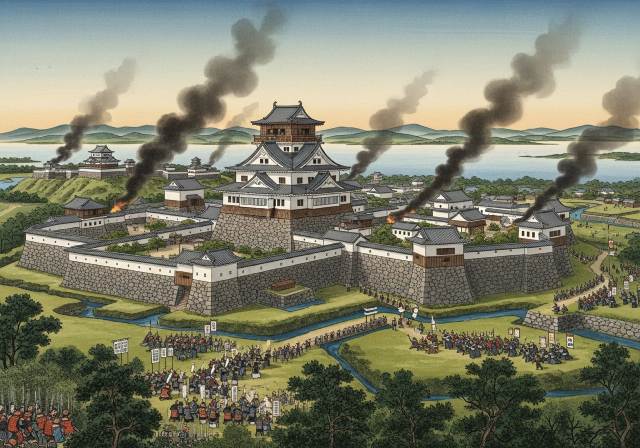
The siege of Otsu Castle was part of the Sekigahara campaign, during which the so-called Eastern Coalition, led by Tokugawa Ieyasu, fought against the Western Coalition, led by Ishida Mitsunari. Otsu Castle was built in 1586 by order of Toyotomi Hideyoshi near the capital Kyoto, on the site of the dismantled Sakamoto Castle. It belonged to the type of “water castles” — mizujō — as one side of it faced Japan's largest lake, Lake Biwa, and it was surrounded by a system of moats filled with lake water, which made the fortress resemble an island.
-
The Siege of Shiroishi Castle
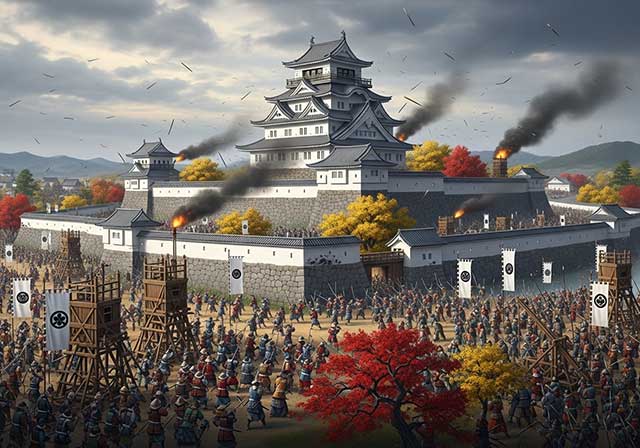
The siege of Shiroishi Castle was part of the Sekigahara campaign and took place several months before the decisive battle of Sekigahara. The daimyo of Aizu Province, Uesugi Kagekatsu, posed a serious threat to Tokugawa Ieyasu's plans to defeat the Western Coalition, and Ieyasu decided to curb his actions with the help of his northern vassals. To this end, he ordered Date Masamune to invade the province of Aizu and capture Shiroishi Castle.
-
The Second Siege of Jinju Castle
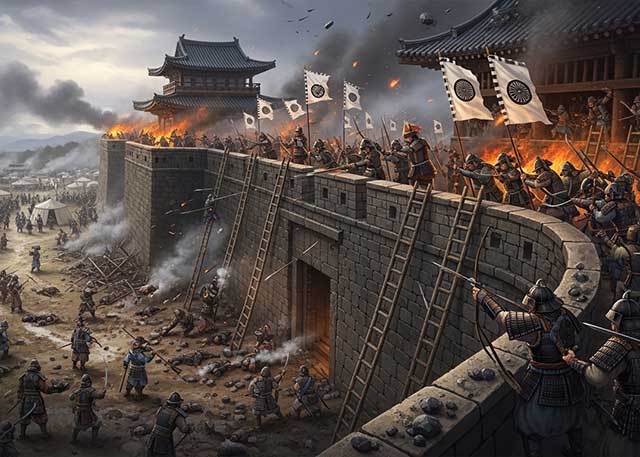
During the two Korean campaigns of the 16th century, the Japanese repeatedly had to capture enemy fortresses and defend occupied or constructed fortifications from the combined Korean and Chinese forces. Among all the operations of that time, the second siege of Jinju Castle is considered the most interesting from the point of view of siege warfare.
-
The Siege of Takamatsu Castle
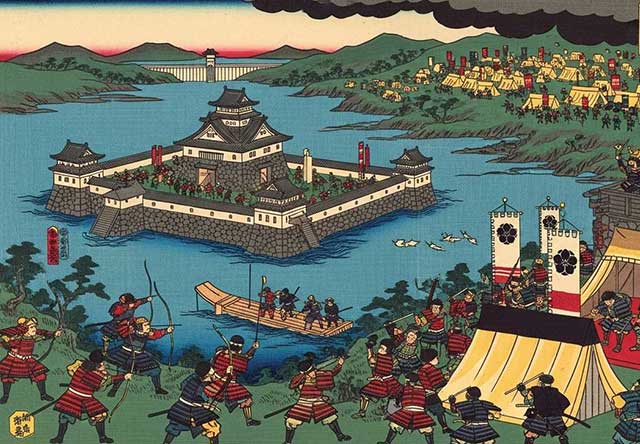
The siege of Takamatsu Castle in Bitchu Province is considered the first mizuzeme, or “water siege,” in Japanese history. Until then, such an original tactic had never been used.

